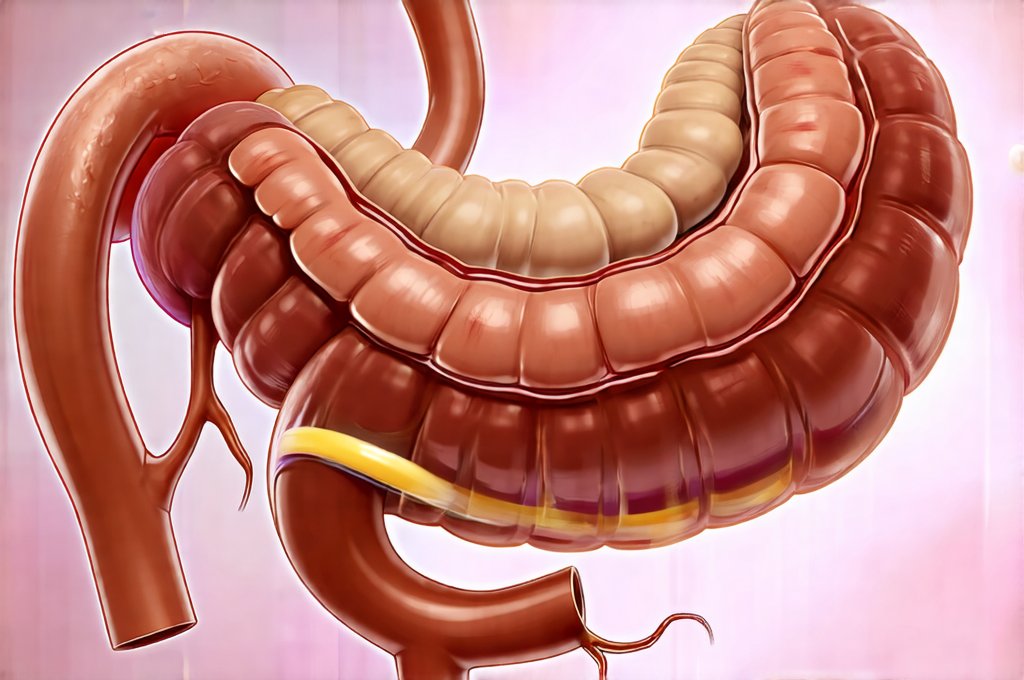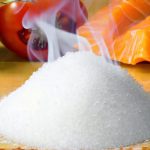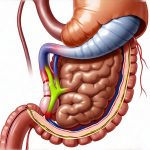Gas is a completely normal part of digestion. Most people experience it daily, and it’s rarely a cause for serious concern. However, distinguishing between gas originating in the stomach versus the colon can sometimes be tricky, as symptoms can overlap and vary significantly from person to person. This article will delve into the nuances of each type of gas, exploring their common causes, associated symptoms, and potential ways to differentiate them, ultimately providing a better understanding of what’s happening within your digestive system. Recognizing these differences isn’t about self-diagnosing, but rather gaining knowledge that can help you communicate more effectively with healthcare professionals if concerns arise.
It’s important to remember that the digestive process is complex and interconnected. What we perceive as “gas” is often a byproduct of bacterial fermentation in the gut, breaking down undigested carbohydrates. The composition of our diet plays a huge role, as do individual sensitivities and underlying conditions. Furthermore, the speed at which food moves through the digestive tract influences gas production and how it’s experienced. Understanding these fundamental aspects will help contextualize the differences between stomach and colon gas and provide a more holistic perspective on digestive health.
Understanding Gas Origins: Stomach vs. Colon
The primary difference between stomach gas and colon gas lies in where they are produced, and this dictates their characteristics. The stomach’s role is largely mechanical digestion – breaking down food with acids and enzymes. While some gas is created in the stomach (primarily from swallowed air), it’s usually less abundant than what’s generated further down the digestive tract. Colon gas, on the other hand, arises from the fermentation of undigested carbohydrates by bacteria in the large intestine. This bacterial activity is a natural process, but certain foods and conditions can exacerbate it, leading to increased gas production. Think of the colon as the primary ‘gas factory’ within your digestive system.
The type of food contributing to each kind of gas also differs. Stomach gas is more closely linked to things like carbonated beverages, quickly eaten meals (leading to swallowed air), and even anxiety (which can cause increased air swallowing). Colon gas, however, is heavily influenced by dietary fiber, complex carbohydrates found in foods like beans, broccoli, cabbage, onions, and whole grains. Foods high in FODMAPs (fermentable oligosaccharides, disaccharides, monosaccharides and polyols) are notorious for triggering colon gas due to their rapid fermentation by gut bacteria. Foods That Cause Gas offer more insight into dietary triggers.
It’s also vital to consider the timing of symptoms. Stomach gas tends to be more immediate, often occurring soon after eating or drinking. Colon gas may take longer to develop as it involves bacterial fermentation – you might experience bloating and discomfort several hours after a meal containing high-fiber foods. The speed of digestion and individual gut motility influence this timing, making it difficult to pinpoint without careful observation.
Identifying Stomach Gas: Symptoms and Characteristics
Stomach gas often presents differently than colon gas. A key characteristic is belching, which is the body’s way of releasing excess air accumulated in the stomach. This can occur during or shortly after eating. Other common symptoms include a feeling of fullness or bloating in the upper abdomen, sometimes accompanied by a burning sensation (heartburn) if acid reflux is present. The discomfort tends to be more localized and less diffuse than colon gas pain.
- Quick onset: Symptoms usually appear soon after eating.
- Upper abdominal discomfort: Bloating and pressure are generally felt higher up in the stomach region.
- Belching or burping: Frequent belching is a hallmark sign of excess air in the stomach.
- Possible heartburn: If acid reflux accompanies gas, you might experience burning sensations in your chest.
It’s important to distinguish between simple stomach gas and symptoms that could indicate something more serious like gastritis or a peptic ulcer. Persistent abdominal pain, nausea, vomiting, or blood in your stool require medical attention. How to Differentiate Between Ulcer Pain and heartburn can help you understand the difference. Stomach gas is generally transient and relieved by belching or allowing time for digestion to occur. However, if it’s consistently bothersome or interfering with daily life, seeking professional advice is always recommended.
Recognizing Colon Gas: Symptoms and Characteristics
Colon gas manifests quite differently from its stomach counterpart. Unlike the quick relief of burping, colon gas often feels like a deep-seated bloating that can affect the entire abdomen. Flatulence – passing gas – is a more prominent symptom in colon gas. This is because the fermentation process creates larger volumes of gas in the large intestine. The discomfort associated with colon gas tends to be lower abdominal and may shift around, making it harder to pinpoint its exact location.
- Lower abdominal bloating: A feeling of fullness and distension in the lower abdomen.
- Flatulence: Passing gas is a frequent occurrence.
- Cramping or sharp pains: Discomfort can range from mild cramping to more acute pain.
- Changes in bowel habits: Colon gas can sometimes be accompanied by constipation, diarrhea, or alternating between the two.
The timing of colon gas symptoms also differs. It typically develops several hours after a meal as bacteria work on undigested carbohydrates. The intensity and frequency of colon gas are heavily influenced by diet; consuming large amounts of fiber-rich foods or FODMAPs can significantly increase production. Constipation exacerbates the issue, as it allows more time for fermentation to occur. How to Differentiate Between Bloating and weight gain is important to understand related symptoms.
Differentiating Through Diet and Observation
The best way to begin distinguishing between stomach and colon gas is through careful observation and dietary adjustments. Keep a food diary, noting what you eat and when you experience gas symptoms. This can help identify trigger foods that contribute to either type of gas. Pay attention to the timing of the discomfort – does it happen immediately after eating, or several hours later?
- Elimination Diet: Consider temporarily eliminating common gas-producing foods (beans, broccoli, cabbage, onions, carbonated drinks) from your diet to see if symptoms improve.
- Fiber Intake: Monitor how changes in fiber intake affect your gas levels. Increasing fiber can initially increase gas production but ultimately promote regular bowel movements and reduce bloating over time.
- Swallowing Air: Be mindful of habits that lead to air swallowing, such as eating quickly, chewing gum, or drinking through a straw.
If stomach gas is suspected, reducing carbonated beverages and slowing down your eating pace might offer relief. For colon gas, focusing on a low-FODMAP diet (under the guidance of a healthcare professional) and ensuring adequate hydration can be helpful strategies. Remember that these are self-management techniques and should not replace medical advice if you have persistent or severe symptoms. The Difference Between Stomach Sensitivity and GERD might also explain some of your digestive issues. Consistent monitoring is key to understanding your individual digestive patterns. Additionally, understanding how overeating affects the valve can help prevent stomach discomfort. Consider consulting resources on Colon Polyps if you have concerns about your colon health. Finally, it’s good to know how to differentiate between allergy and intolerance related to food sensitivities.


















